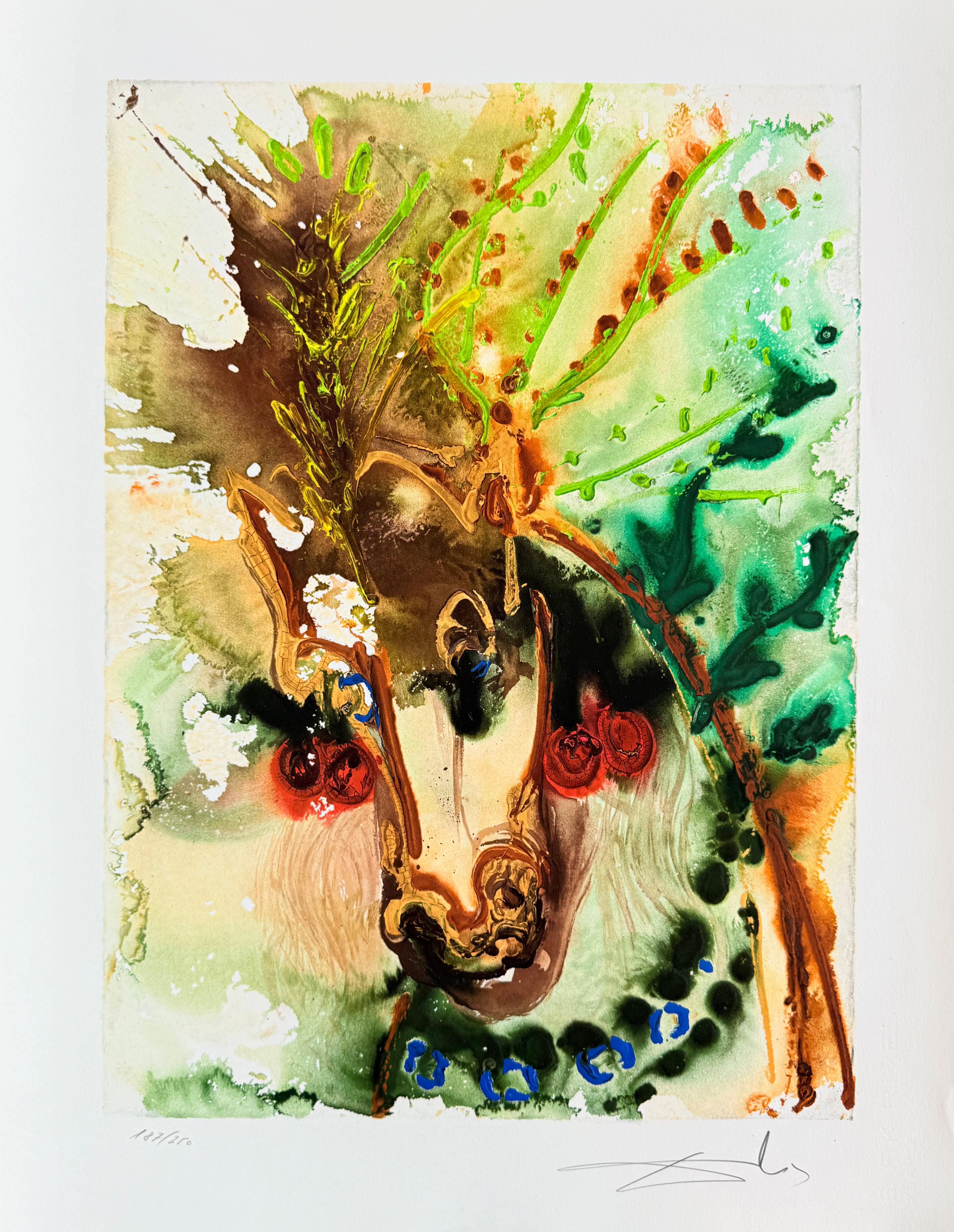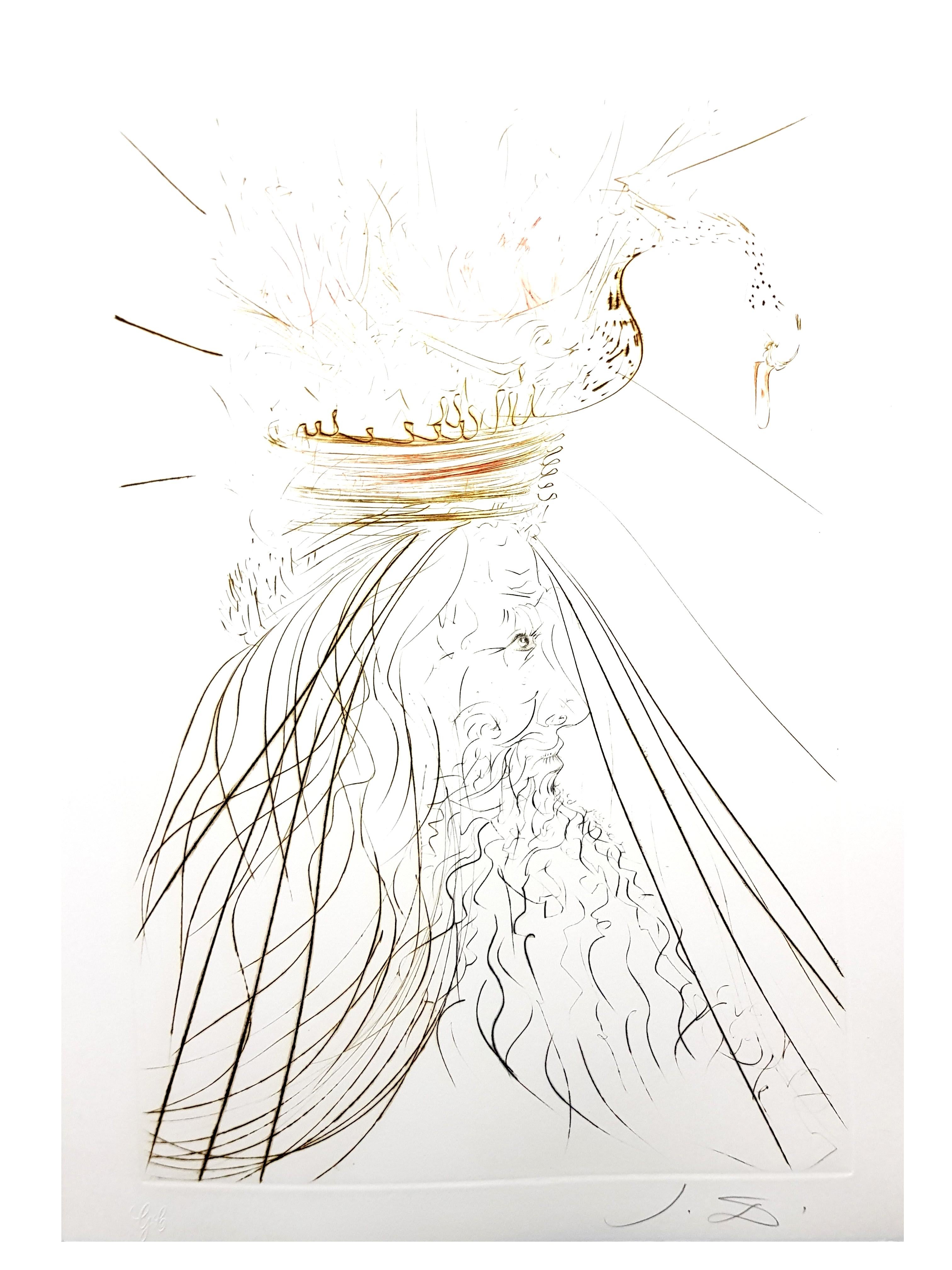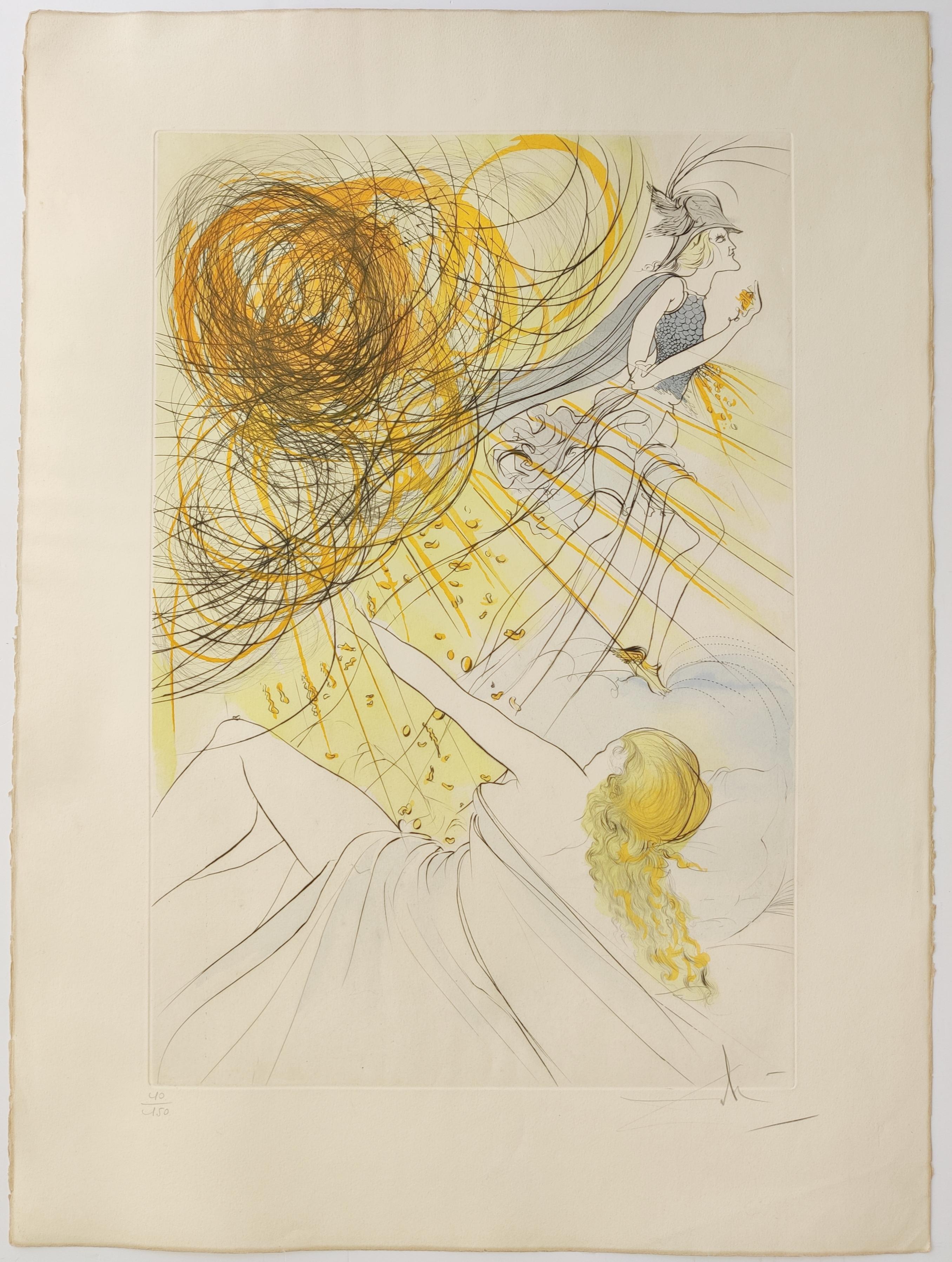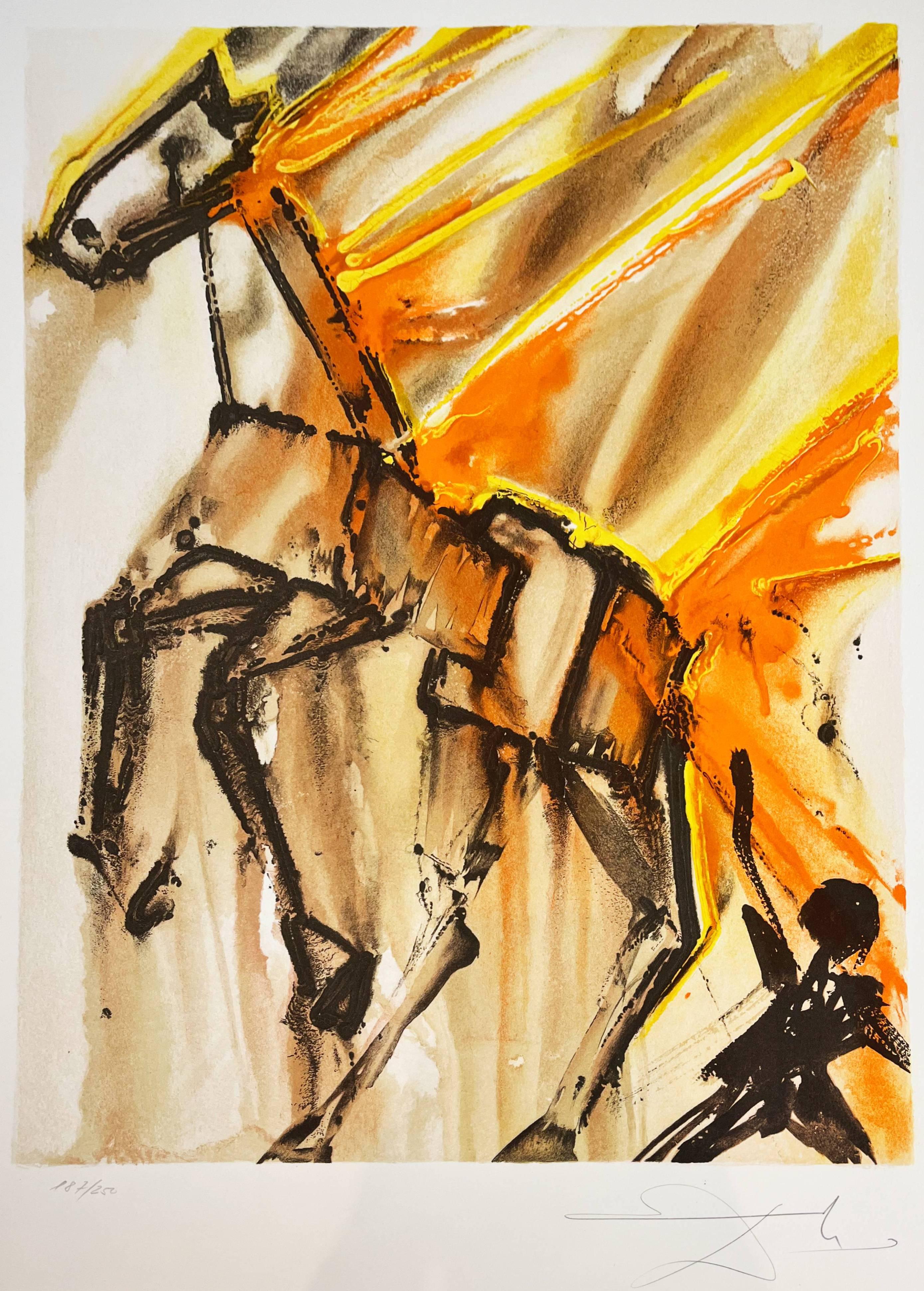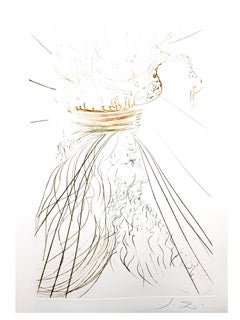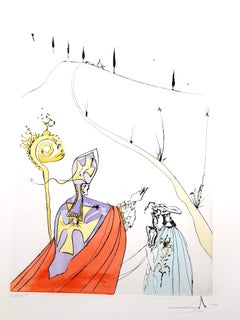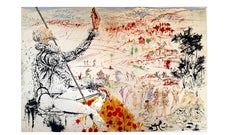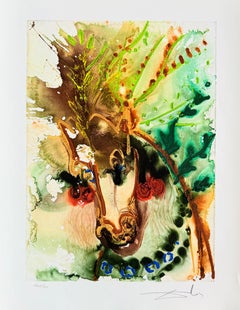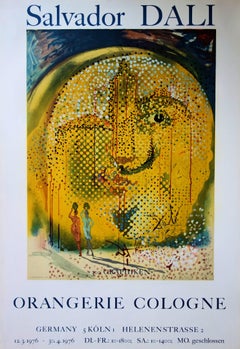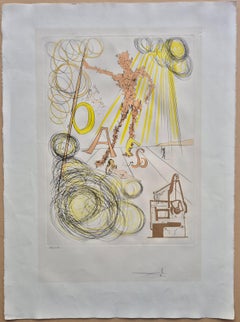Items Similar to Salvador Dali - Perrier - Poster
Want more images or videos?
Request additional images or videos from the seller
1 of 10
Salvador Dali - Perrier - Poster1970
1970
$2,044.35
£1,488.06
€1,700
CA$2,782.57
A$3,112.48
CHF 1,619.75
MX$38,315.66
NOK 20,606.59
SEK 19,333.05
DKK 12,937.37
Shipping
Retrieving quote...The 1stDibs Promise:
Authenticity Guarantee,
Money-Back Guarantee,
24-Hour Cancellation
About the Item
Salvador Dali - Perrier - Vintage Lithographic Poster
On Golden paper
Signed in the plate
1970
Dimensions: 60 x 42 cm
Reference: Field page 233
Some folding
- Creation Year:1970
- Dimensions:Height: 23.63 in (60 cm)Width: 16.54 in (42 cm)
- Medium:
- Movement & Style:
- After:Salvador Dalí (1904 - 1989, Spanish)
- Period:
- Condition:
- Gallery Location:Collonge Bellerive, Geneve, CH
- Reference Number:1stDibs: LU16125265882
About the Seller
4.9
Gold Seller
Premium sellers maintaining a 4.3+ rating and 24-hour response times
Established in 2015
1stDibs seller since 2015
959 sales on 1stDibs
Typical response time: <1 hour
- ShippingRetrieving quote...Shipping from: Collonge Bellerive, Geneve, Switzerland
- Return Policy
Authenticity Guarantee
In the unlikely event there’s an issue with an item’s authenticity, contact us within 1 year for a full refund. DetailsMoney-Back Guarantee
If your item is not as described, is damaged in transit, or does not arrive, contact us within 7 days for a full refund. Details24-Hour Cancellation
You have a 24-hour grace period in which to reconsider your purchase, with no questions asked.Vetted Professional Sellers
Our world-class sellers must adhere to strict standards for service and quality, maintaining the integrity of our listings.Price-Match Guarantee
If you find that a seller listed the same item for a lower price elsewhere, we’ll match it.Trusted Global Delivery
Our best-in-class carrier network provides specialized shipping options worldwide, including custom delivery.More From This Seller
View AllSalvador Dali - King Marc
By Salvador Dalí
Located in Collonge Bellerive, Geneve, CH
Salvador Dali - King Marc - Original Etching
Dimensions: 45 x 33 cm
Edition: 125
1970
Signed in pencil.
On Arches Vellum
References : Field 70-10 (p. 60-61)
Category
1970s Surrealist Nude Prints
Materials
Etching
Salvador Dali - The Sacred Love of Gala
By Salvador Dalí
Located in Collonge Bellerive, Geneve, CH
Salvador Dali - The Sacred Love of Gala - Original Signed Engraving
Handsigned in pencil and Numbered
Edition: F195/195
- Printer: Atelier Riga...
Category
1970s Surrealist Figurative Prints
Materials
Etching
Salvador Dali - The Golden Age - Original Lithograph
By Salvador Dalí
Located in Collonge Bellerive, Geneve, CH
Salvador Dali - The Golden Age - Original Lithograph
Joseph FORET, Paris, 1957
PRINTER : Ballon.
SIGNATURE : plate signed by Dali.
LIMITED : 197 copies.
SIZE : 41 x 64 cm
REFERENC...
Category
1950s Surrealist Figurative Prints
Materials
Lithograph
Salvador Dali - Biblia Sacra
By Salvador Dalí
Located in Collonge Bellerive, Geneve, CH
Salvador Dali - The Biblia Sacra was published in 1969 by Rizzoli of Rome
- SIGNATURE : printed in the image
- LIMITED : 1499
- SIZE : 19 x 13 3/4"
- RE...
Category
1960s Surrealist Figurative Prints
Materials
Lithograph
Salvador Dali - The Knights of King Arthur
By Salvador Dalí
Located in Collonge Bellerive, Geneve, CH
Salvador Dali - The Knights of King Arthur - Original Etching
Dimensions: 45 x 33 cm
Edition: 125
1970
Signed in pencil.
On Arches Vellum
References : Fiel...
Category
1970s Surrealist Nude Prints
Materials
Etching
Salvador Dali - Picasso: A Ticket to Glory
By Salvador Dalí
Located in Collonge Bellerive, Geneve, CH
Salvador Dali - Picasso: A Ticket to Glory - Original Signed Engraving
Handsigned in pencil and Numbered
Edition: F195/195
- Printer: Atelier Rigal.
- Paper: Rives vellum ; each etc...
Category
1970s Surrealist Figurative Prints
Materials
Etching
You May Also Like
Bucéphale
By Salvador Dalí
Located in OPOLE, PL
Salvador Dali (1904-1989) - Bucéphale
Lithograph from 1970.
Dimensions of work: 68 x 50 cm
On B.F.K Rives paper as stated in the Field catalogue.
Reference: Field 72-6G
The work...
Category
1970s Surrealist More Prints
Materials
Etching, Aquatint, Lithograph
$6,638 Sale Price
20% Off
Salvador Dali -- Homage To Mercure
By Salvador Dalí
Located in BRUCE, ACT
Salvador Dali
Hommage à Mercure, 1973
Hand signed lower right
Numbered 10 / 150 lower left.
Printed by Ateliers Rigal, Paris.
Published by Joseph Foret, Paris.
Reference Michler...
Category
1970s Prints and Multiples
Materials
Engraving
Sol y Dali - Rare Vintage Lithograph Poster - Mourlot 1967 (Field #67-1)
By (after) Salvador Dali
Located in Paris, IDF
Salvador Dali
Sol y Dali
Vintage lithographic poster (Mourlot workshop)
Printed signature in the plate
Edited in 1967 by Jean Schneider
On paper 78 x 54 cm...
Category
1960s Surrealist Figurative Prints
Materials
Lithograph
Salvador Dali -- Hommage to Leonardo da Vinci
By Salvador Dalí
Located in BRUCE, ACT
Salvador Dali
Hommage to Leonardo da Vinci, 1975
Hand signed lower right
Numbered 321/450
Sheet size 76 x 56 cm
Printed by Ateliers Rigal, Paris
Published by Transworld Art, New York...
Category
1970s Prints and Multiples
Materials
Engraving
Clavilegnio
By Salvador Dalí
Located in OPOLE, PL
Salvador Dali (1904-1989) - Clavilegnio
Lithograph from 1970.
Dimensions of work: 68 x 50 cm
On B.F.K Rives paper as stated in the Field catalogue.
Reference: Field 72-6G
The wo...
Category
1970s Surrealist More Prints
Materials
Lithograph
Sol Y Dali
By Salvador Dalí
Located in Hollywood, FL
ARTIST: Salvador Dali
TITLE: Sol Y Dali
MEDIUM: Lithograph
SIGNED: Hand Signed
EDITION NUMBER: 153/200
MEASUREMENTS: 16.5" x 21.9"
YEAR: 1967
FRAMED: Yes
CONDITION: Excelle...
Category
1960s Surrealist Figurative Prints
Materials
Lithograph
More Ways To Browse
Vintage Posters Salvador Dali
Perrier Poster
Perrier Poster Vintage
Perrier Vintage Posters
Large Format Camera Used
Vintage 60s Photography
African Landscape Oil Painting
Oil Painting Storm
Picasso 1958
Couple Love Painting
Joan Miro Frames
Art Auctions Prints And Multiples
California Landscape Plein Air
Face Screen
Lithographs Pablo Picasso 1969
Oil Painting Nude Woman
Painting Shoe
Black And White Abstract Lithographs
